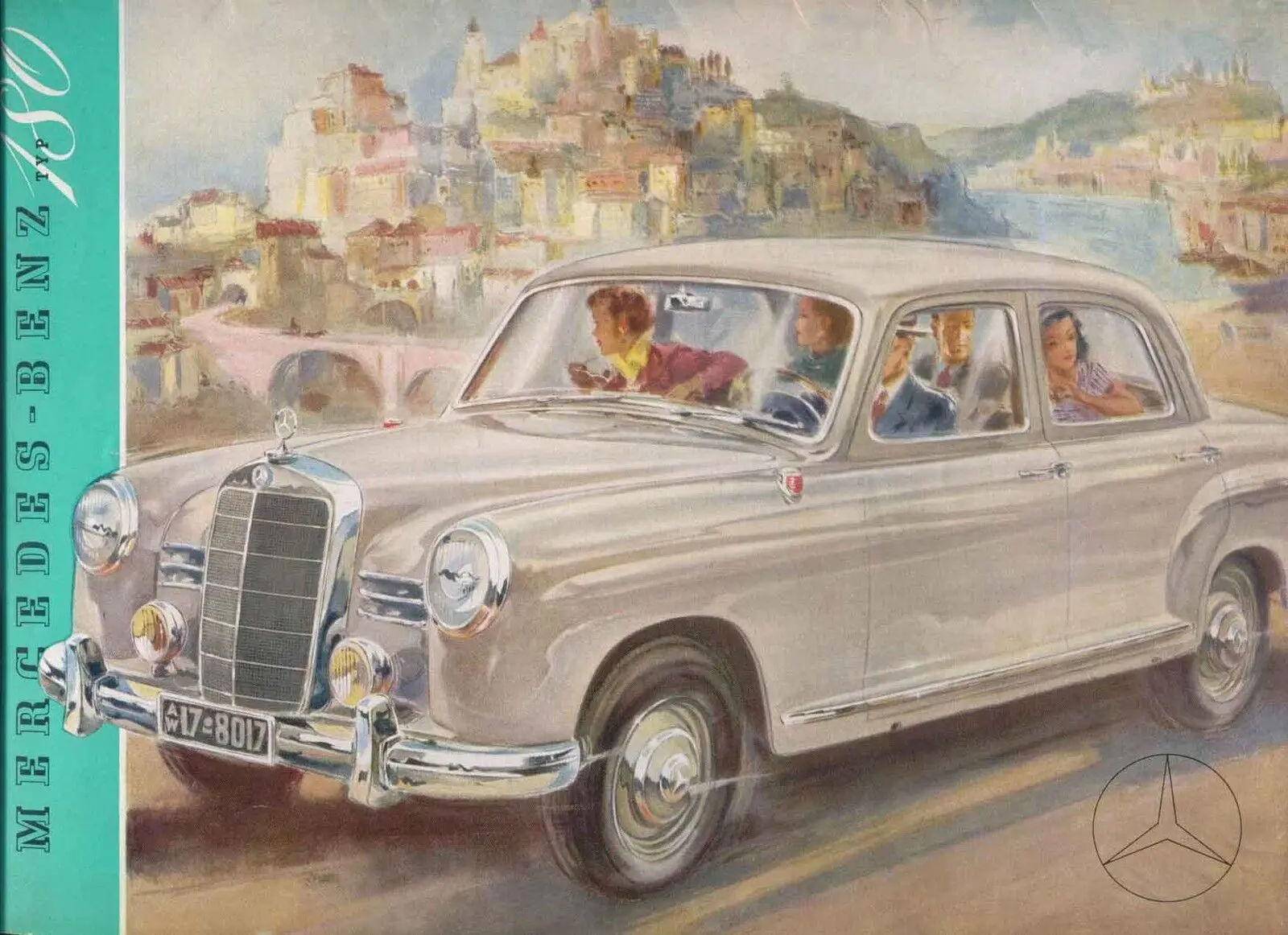THE MERCEDES-BENZ PONTON – A CELEBRATION
26 April 2023
At my first Classic Car Boot Sale at King’s Cross, one of the many fine cars truly appealed to me – a star of the www.afroclassics.uk display. It was the sort of vehicle seen in 1960s ‘Cold War’ dramas such as Funeral in Berlin or The Quiller Memorandum. That ivory and black 1955 Mercedes-Benz 180 Ponton exuded distinction in every detail, including the wing-mounted front indicators.
And the 180, which celebrates its 70th birthday this year, is one of the most important cars to wear the Mercedes-Benz badge. It was their first product with unitary construction and the model that anticipated generations of W114/115s, W123s and W124s.

1951 saw the launch of the 300 Adenauer, the first new design to leave the Stuttgart factory after the Second World War. However, that was a vehicle for company directors and heads of state while Mercedes needed a replacement for the cheaper but ageing W136-series 170, dated back to 1936. Its successor was powered by the familiar 1,767cc four-cylinder engine but featured radically different Pontoon styling.
Mercedes-Benz introduced the 180 on 8 September 1953, and many 170 owners upgrading to the latest 180 would have almost instantly noticed less noise and enhanced rigidity. The firm’s renowned engineer Béla Barényi ensured the Ponton had enhanced side impact protection, and The Motor was highly impressed with the technical specification: “Even more remarkable is the mounting for the engine, clutch, gearbox, and suspension units. These are all separately mounted on a sub-frame which is in turn connected to the body by three large rubber joints spaced out in triangular fashion”.
In its homeland, the 180 appealed to solidly middle-class drivers who regarded the Ford Taunus as too underpowered, the Opel Kapitän as too déclassé and the Borgward Hansa 1500 as slightly dated. BMW crucially lacked a Ponton rival and would not offer a saloon in this category until the 1961 1500. Other European rivals included the Fiat 1400/1900 and the Renault Frégate.
As for British motorists, 1953 marked the Government permitting imported West German cars in exchange for that country taking £2.7m worth of British vehicles. Daimler-Benz planned a display at the London Motor Show, but import duties inflated the 180’s price to £1,342, making it more expensive than the six-cylinder Wolseley 6/80.
However, there were motorists who valued the Ponton’s low-key air of competence. The Motor described it as “An Exceptionally Refined 5-Seater Touring Car” and Autocar proclaimed: “The Mercedes-Benz Type 180 is designed and built by a pioneer in the automobile industry, and its quality and finish reach standards one would expect from such a manufacturer”. To the 180 owner, “quality” did not mean extraneous decorations but the same construction standards as a 300.
The diesel-powered 180D supplanted the original model in 1954. The 220, which bridged the gap between the Ponton and the Adenauer, followed later that year. By 1955 Mercedes-Benz offered the 180-AM and 180D-AM (AM: “Auswärtsmontage” or external build) for conversion to pick-ups, ambulances and Kombi estate cars made by either Binz of Lorch near Stuttgart or Miesen of Bonn.
The 190 joined the line-up in 1956, and when the last Ponton left the works in 1962, they had established a legacy with countless drivers, with taxis, police cars or transport for the socially aspirational. The example at King’s Cross hailed from Australia, (where Mercedes-Benz assembled the 180), is a reminder of how W120 family was respected worldwide.
Plus, those front indicators are undeniably stylish.
With thanks to: Luigia Minichiello and http://www.afroclassics.uk
